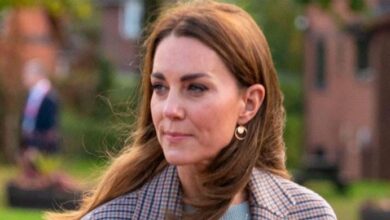Kate Middleton Radio Prank Still Haunts More Than a Decade Later

It has been more than twelve years since the shocking death of nurse Jacintha Saldanha, yet the so called Kate Middleton radio prank continues to spark outrage and sadness around the world. What was initially intended as a lighthearted joke ended in tragedy, leaving a permanent mark on both the media industry and the royal family.
Saldanha, who was 46 at the time, worked at King Edward VII’s Hospital in London. In December 2012 she answered a prank call from Australian radio hosts who pretended to be Queen Elizabeth and the then Prince Charles. Without realizing she was being deceived, she transferred the call to another nurse who went on to reveal confidential details about Kate Middleton’s early pregnancy.
The prank was later broadcast in Australia, and although it was initially treated as comedic entertainment, it quickly took a darker turn. Just three days later, Saldanha was found dead by suicide in her nursing quarters. The incident shocked the globe, leading to a fierce debate about media responsibility, ethics, and the consequences of exploiting people for entertainment.
At the time, Prince William and Kate Middleton released a heartfelt statement saying they were deeply saddened by the loss and that their thoughts and prayers were with the nurse’s grieving family. Palace officials also clarified that the royal couple had never lodged a complaint against the hospital staff and had placed no blame on Saldanha herself.
The royal family’s compassionate response was widely praised as they made it clear that their grief was directed toward supporting the nurse’s loved ones rather than pointing fingers. This approach was seen as an attempt to prevent further escalation of the tragedy, and it highlighted their sense of responsibility during a moment of intense global scrutiny.
Media critics were quick to point out that while the prank may have seemed harmless to the presenters, the psychological toll it took on the unsuspecting nurse was catastrophic. Many argued that prank calls involving healthcare workers and sensitive medical details should never have been allowed to air, particularly when it involved a patient of such high profile.
The tragedy triggered global conversations about press ethics, particularly in relation to the treatment of royals and public figures. It exposed how far some outlets and personalities were willing to go for ratings and shock value, without considering the real people affected by their actions.
In Australia, the radio station involved came under immense pressure. Though the presenters later expressed regret and insisted they never intended to cause harm, the damage had already been done. The case became a defining moment in discussions about responsible journalism, crossing the line between satire and exploitation.
Read More: Kate Middleton’s Brother James Middleton Shares Heartbreaking Post That Leaves Fans in Tears
Even years later, the story resurfaces online as a cautionary tale. On social media platforms, users often bring up the prank when discussing the dangers of irresponsible media practices. It continues to serve as a reminder that jokes and stunts in the public sphere can have devastating consequences when real lives are involved.
For supporters of the royal family, the tragedy also marked an early example of the intrusive pressures that Prince William and Kate have had to endure since their marriage. The public fascination with every detail of their lives has at times led to breaches of privacy, and in this case, an unimaginable human cost.
Kate Middleton herself was in the early stages of her pregnancy with Prince George at the time, and the excitement surrounding the royal baby had made headlines worldwide. Yet the joyous news was overshadowed by the global outrage that followed the prank, which many considered an unnecessary and cruel invasion of privacy.
The legacy of the incident has been twofold. On one hand, it has fueled continuing debates about the ethical responsibilities of journalists and entertainers. On the other, it has highlighted the compassion and restraint shown by the Prince and Princess of Wales, who managed to navigate the heartbreaking aftermath without inflaming the situation further.
Over a decade later, Jacintha Saldanha’s death is still remembered as one of the darkest chapters in the intersection of media and the royal family. Each anniversary of her passing brings renewed reflection on how far entertainment should go and at what cost.
Ultimately, the so called Kate Middleton radio prank stands as a reminder that the line between humor and harm is a fragile one. For the Saldanha family, the loss remains deeply personal. For the public, it remains an enduring lesson in empathy, accountability, and the responsibility that comes with broadcasting to millions.






